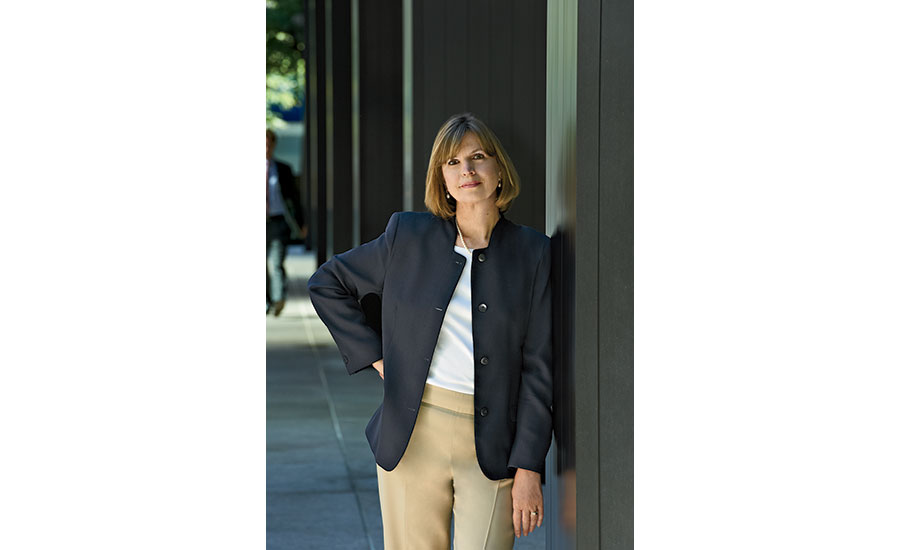Nothing Like a Dame
This fall, more women than ever are earning kudos in architecture and the arts.

Photo © Michel Arnaud
This has been a big season for celebrating the achievements of women. RECORD's annual Women in Architecture Design Leadership awards have just honored five exceptional professionals, whose broad range of accomplishments are having a profound impact. The beauty of the work of this year’s Design Leader Toshiko Mori can be seen in the exploration of ideas, materials, and details in projects such as the art center THREAD, in Senegal, while the expressiveness of New Generation Leader Sharon Johnston is exemplified in the Menil Drawing Center in Houston and the rough-and-ready Margo Leavin Graduate Art Studios at UCLA.
Claire Weisz is honored as this year’s Innovator for stretching the boundaries of practice in her work in the public realm. Similarly, the Activist award-winner, Dana Cuff, is intensely engaged in civic design as founding director of UCLA’s cityLAB. Notably she was coauthor of the California legislation to allow accessory dwelling units on singlefamily lots across the state, to address affordable-housing shortages. This year’s Educator honoree, Mabel O. Wilson, professor of architecture and of African American and African Diasporic Studies at Columbia University, has deeply probed the history of race and racism in the built environment, as both a scholar and a practitioner.
Also receiving a major accolade last month was Lisa Iwamoto, RECORD's 2018 New Generation Leader, who won, along with her partner, Craig Scott, the National Design Award for Interior Design.
Meanwhile, RECORD's 2018 Design Leader, Elizabeth Diller, with her firm, Diller Scofidio + Renfro, along with Gensler, led the $450 million renovation and expansion of New York’s Museum of Modern Art. The new MoMA has 47,000 additional square feet of gallery space—which prompted the curators to reinstall the entire museum with works from the permanent collection, many of them recently acquired. The results are radical. While MoMA once mapped the history of modernism largely through the work of white, male, Eurocentric artists, the galleries now include an array of art by people of color and from other cultures— and many more women (about 28 percent of the works on display, about five times as many as before). For example, an abstract painting by Lee Krasner hangs next to a Jackson Pollock canvas—a testament to her own brilliant career, which was subsumed as she worked to promote her husband Pollock’s. Because artwork is now less organized by a narrative chronology, the visitor encounters unexpected moments: in a room devoted almost exclusively to Matisse is an abstract, colorful canvas by the African American expressionist Alma Thomas (1891–1978). The new architecture and design galleries, however, do less to showcase the contributions of women except for Eileen Gray’s and the textiles of Anni Albers, Gunta Stölzl, and Sheila Hicks. One very visible exception is the documentation of Amanda Williams’s Color(ed) Theory, the project in which the architect-turned-artist painted abandoned houses on the South Side of Chicago in vivid hues.
The new MoMA also includes a retrospective of Betye Saar—one of three remarkable older women artists who are getting their due this fall. The 93-year-old Los Angeles–based African American artist, known for printmaking and assemblages, explores racist stereotypes and history in much of her work. The Los Angeles County Museum of Art also has a Saar show currently on view.
Another California-bred artist’s work is surveyed at New York’s Met Breuer, the last stop of a three-city retrospective of Vija Celmins. The Latvian-born artist, now 80, came of age in the 1960s Southern California art scene, but has determinedly bucked every art trend to create work of such exquisite precision and concentration—paintings of the ocean surface or the night sky—that they really are about seeing.
Lastly, an exhibition called Agnes Denes: Absolutes and Intermediates has opened at the Shed—and it is a revelation. The 88-year-old Denes is best known for her 1982 piece Wheatfield—A Confrontation, in which she planted a two-acre field of wheat near Wall Street in Lower Manhattan—a provocation that explored the urban and the rural, finance and agriculture, food-management and the environment. But the Hungarian-born artist has mostly worked under the radar, with her wide-ranging interests sparking various kinds of art, now on view in the show, including pieces that veer toward architecture, and delicate and exacting drawings on gridded paper that she made in the 1970s. When the director of the Shed, Alex Poots, asked her why she hadn’t had an exhibition like this before, she replied, “I’m a visual artist, a philosopher, a draftsman, an environmentalist, and a woman. I’m hard to fit in one box.”
Fortunately for Denes as well as a host of other women in art, design, and architecture, the boxes are getting big enough to hold all kinds of work and ideas.




